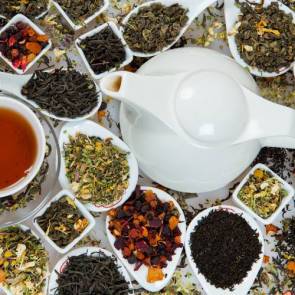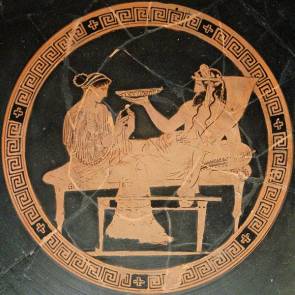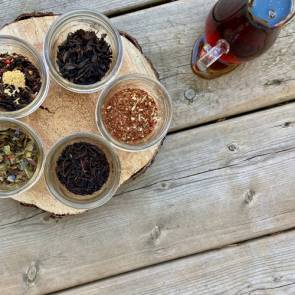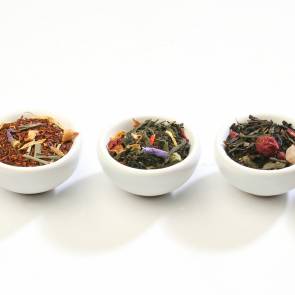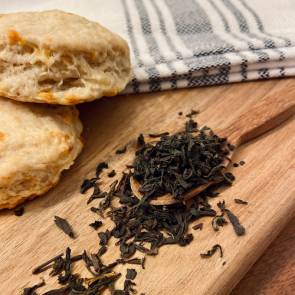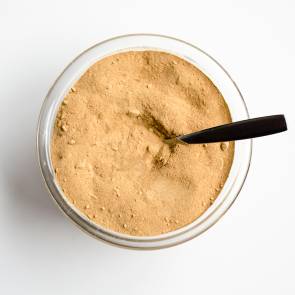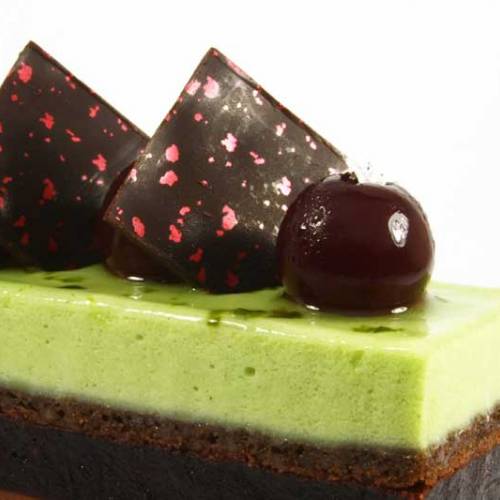
When enjoying some of the better dining establishments in town, you will usually see your menu items accompanied by a wine suggestion – and it definitely makes a difference! Choosing the right wine is an important part of the food selection process, and can make or break the overall dining experience. In fact I know some people who will select their meal based on their wine preference for the evening, using the meal to accentuate the wine! Tea selection is just as important. Our exposure to good quality loose-leaf teas is increasing, with these same establishments offering a higher quality and diverse selection of teas, not to mention the great selection of high quality Shanti teas our customers have at home as well, right? ![]() So the question of which tea to goes with which foods is becoming increasingly relevant. Today’s article is aimed at helping you to make that choice.
So the question of which tea to goes with which foods is becoming increasingly relevant. Today’s article is aimed at helping you to make that choice.
Although the exact specific variety of tea chosen to match a meal becomes more and more of a personal choice once you are familiar with many varieties of tea, there are some basic categorical guidelines which you can follow if you are new to tea and food pairing. These guidelines are based largely on the flavor and strength of the tea compared with the flavor and strength of the food. You should always be looking to accentuate one with the other: an ideal pairing makes both the food and the tea taste better.
White Tea Pairings
Generally speaking, pure un-blended white tea produces a very light infusion. So light, in fact, that most foods will overwhelm the flavor profile of white tea and often leave you with the impression that you are simply drinking hot water. When considering including a white tea in combination with food, it is best to choose a very light food with very light flavors. White tea has a natural sweetness which is accentuated when combined with foods that lack this natural sweetness. For example, you might enjoy combining a white tea with an undressed basic salad. Fruit salads would not be recommended with white tea as the natural sweetness of the fruits will diminish the pleasant flavors of the white tea. Salad dressing will definitely overwhelm white tea. Just a plain basic salad can taste better with white tea, and white tea will taste slightly sweeter when combined with basic salads. This is what I would call an ideal pairing. There are very few foods that combine well with white tea, so it may be best to simply drink white tea alone and not combine it with food.
Green Tea Pairings
Green teas have much better luck than white teas in terms of pairings, and there are basically 3 different flavor profiles of green teas to consider: vegetal or grassy, which are generally representative of Japanese green tea; smoky or strong, which are representative of Chinese green teas, and fruity or citrus, which are representative of Ceylon (Sri Lankan) and Indian green teas.
Vegetal Green Teas: Vegetal green teas have a fresh, grassy flavor, sometimes reminiscent of sea weed. These types of teas are very complimentary to seafood. The freshness and grassy flavor of the green tea accentuates the entire category of sea foods, and in turn, seafood prepares the palette very well to receive this profile of green tea.
Smoky Green Teas: Smoky green teas have a slight smokiness to them acquired during manufacturing. These stronger teas, like Gunpowder or Precious Eyebrow, compliment a range of foods which are stronger in flavor profile than seafoods, but lighter in profile than red meats or similar strong foods. Smoky green teas do not go well with sweetened foods, as these foods will bring out the bitterness of the tea. Instead, consider combining strong green teas with foods such as chicken, light stir-frys, potatoes in various forms and other root vegetables. This range of teas also combines will with pan-fried chicken or turkey, and some lighter styles of pizza. These stronger green teas have an astringent quality which is very helpful to cut through some of the light greasy mouth-feel left behind by pan-fried chicken or turkey.
Fruity Green Teas: Fruity green teas such as Cherry Sencha are excellent when combined with light meats such as chicken or turkey, and are also great as iced teas. Because these teas are slightly lighter than the smoky green teas, and also have a light natural sweetness, they are favorites for many kinds of salads including fruit salads, sandwiches, unsweetened pastries of all kinds like croissants, wholewheat bread, paninis, etc. Although The fruity green teas are good with light meats, they are not good for greasy or deep-fried meats; combine with baked chicken or turkey rather than pan-fried.
Oolong Tea Pairings
Oolongs are available in many varieties, however I will break them down into 2 main categories: Light oolongs and dark oolongs. Light oolongs like Tie Kwan Yin (Iron Goddess) have a very different flavor profile than dark oolongs such as the Wuyi Rock. Light oolongs are fragrant, sweet, aromatic, and generally floral, while dark oolongs are more full-bodied, smoky, and strong, although not as strong as black teas.
Light Oolongs:Light oolongs are best combined with foods that bring out the floral and sweet character of the tea. I would recommend foods which have muted fragrance and very light or natural sweetness. For those who like the sweet & salty combination, light salted snacks like crackers, baked chips, etc would go quite well, but I would stay away from fried foods as light oolongs lack the astringency to cut through the greasiness of fried foods. Personally, I would not really consider a light oolong as a meal accompaniment so much as a snack accompaniment.
Dark Oolongs:Dark oolongs are excellent when combined with many types of pastries, pancakes with natural maple syrup, fried or baked light meats, medium rare to rare red meats, and many desserts. they go especially well with fish like salmon, trout, bass, etc. A friend of mine makes a great poached salmon in dark oolong which is simply brilliant in flavor and profile (tea is not just for drinking!). Dark oolongs go very well with smoked meats as well, and meat-based appetizer plates. I would not combine dark oolong, or any tea except for Masala Chai blends for that matter, with spicy sauces like Tabasco or meals which liberally use hot sauces. The sensitivity of your palate will diminish, and you will not be able to pick up the complexities of the tea.
Black Tea Pairings
Black teas can be loosely divided into 3 general categories in terms of food pairing: Fruity, malty or earthy, and smoky.
Fruity Black Teas:Fruity black teas are generally from India or Sri Lanka. These teas are excellent when combined with sweet desserts, thick pastries, or any foods that leave a thick residual mouth-feel. The tannins in black tea help to cleanse this feeling and accentuate the sweetness of the food. Oftentimes when eating thick pastries you will find that the second bite in never as good as the first, often because your mouth is already coated with the thickness of the flavor from the first bite. Having a sip of black tea between bites can help to make every bite of your rich dessert as tasty and fulfilling as the first.
Earthy and malty Black Teas:Earthy black teas are usually from Yunnan in China or Africa, while malty black teas are usually from India. As opposed to the fruity teas which tend to go well with rich and thick desserts, these earthy and malty black teas are a great accompaniment to red meat or heavily flavored meats like jerk chicken, blackened meats or vegetables, mashed potatoes with gravy.. you get the idea. Because the earthy black teas are not as sweet as the fruity black teas, they tend to be best when accompanied with thick or rich foods which are not sweet.
Smoky Black Teas:Smoky black teas are predominantly from China and are a result of the manufacturing process. In some cases, such as Lapsang Souchong, the smokiness is very strong and is definitely an acquired taste. These teas are so intense that they would be best accompanied by equally intense foods. I find them best suited to dark and flavorful meats or blackened meats, and not well suited to any lighter foods. As some of these teas are really an acquired taste, the proper food paring in this case usually results from the other acquired tastes you might enjoy. While I would not pair an earthy black tea with a heavily sweetened dessert, a Lapsang Souchong can taste quite good when combines with a sweet chocolate cake. The sweetness and smokiness tend to swing the balance of flavor from one extreme to the other, creating an interesting dynamic.
The above recommendations are based on pure un-blended teas only. Teas which are flavored and blended, like strawberry white or cherry sencha, would transcend some of the above categorization and can apply to various types of foods. Some teas like our Snow Maple are a dessert tea on their own. The general characteristics described above, however, should give you a good starting point when trying to figure out how to pair tea with food. From here, the best thing to do is to experiment; break the rules, try new pairings, and most of all, have fun! Happy pairing!
Do you have any suggestions about tea and food pairing you’d like to share with us? Please let us know with a comment below, or on our facebook community page.


